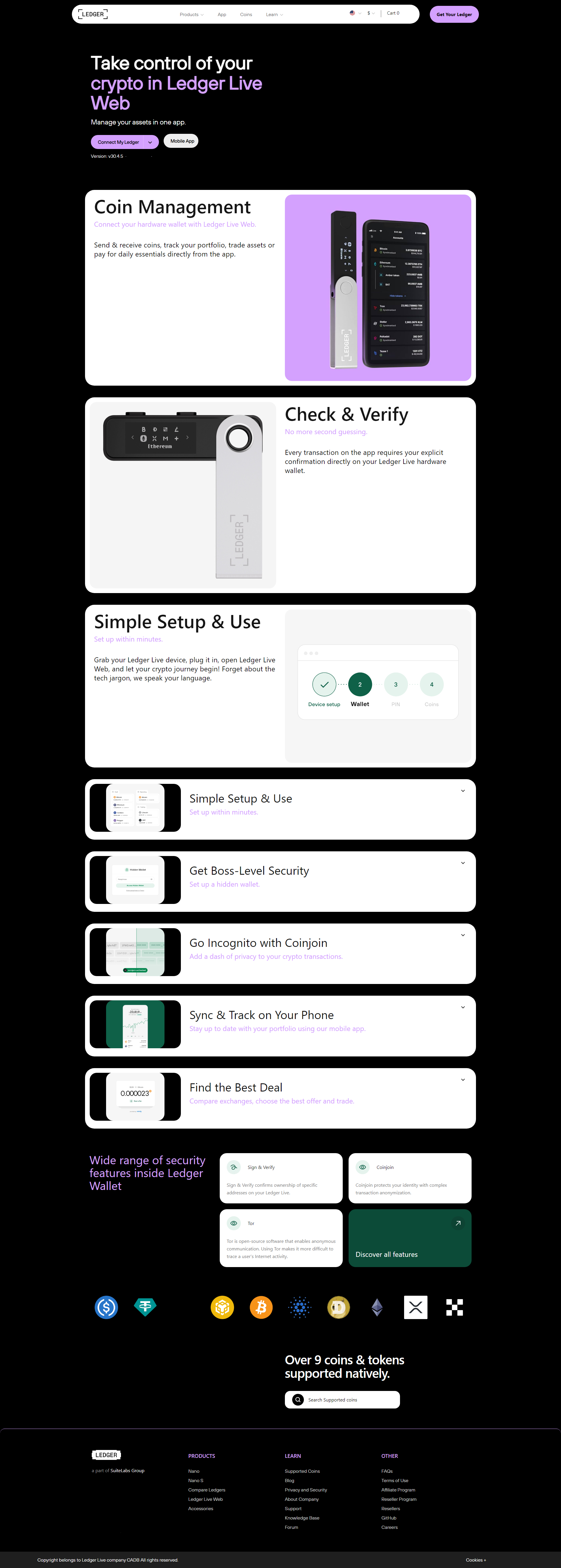Ledger Hardware Wallet
As cryptocurrency continues its journey into the mainstream, so do the threats that target digital asset holders. From exchange hacks to phishing scams, millions in crypto are lost every year due to poor security practices. The solution? A Ledger hardware wallet, the industry gold standard for safeguarding your digital assets.
What Is a Ledger Hardware Wallet?
A Ledger hardware wallet is a physical device that stores your cryptocurrency private keys offline, also known as cold storage. Unlike software or online wallets, Ledger wallets are immune to malware, browser attacks, and keyloggers.
The two most popular models are:
- Ledger Nano S Plus – Budget-friendly with support for thousands of coins.
- Ledger Nano X – Premium model with Bluetooth connectivity and larger storage.
Both work in tandem with the Ledger Live app, which lets you manage your crypto securely on desktop or mobile.
Why Choose a Ledger Hardware Wallet?
Here are compelling reasons why over 6 million users have chosen Ledger:
- Private keys never leave the device Even when making transactions, signatures happen within the hardware.
- Tamper-proof technology Each Ledger wallet includes a certified secure element chip (CC EAL5+), the same standard used in passports and SIM cards.
- Compatible with 5,500+ crypto assets From Bitcoin and Ethereum to Polkadot and NFTs—Ledger handles them all.
- Protection from phishing and scams Hardware wallets are isolated from the internet, making attacks nearly impossible.
- Recovery via 24-word seed phrase You can always regain access if your device is lost—provided you keep your phrase secure.
How a Ledger Hardware Wallet Works
Here’s a simplified breakdown:
- Initialization Set up a PIN and write down your 24-word recovery phrase.
- Transaction Signing When sending funds, the transaction data is sent to the Ledger device, where you must physically approve it.
- Private Key Storage Your keys never touch the internet—they remain locked inside the hardware.
- Ledger Live App View balances, stake coins, buy/sell crypto, and manage NFTs—all through a secure interface.
This hardware-software combo provides maximum security without sacrificing usability.
Step-by-Step Guide to Setting Up Your Ledger Wallet
Step 1: Go to Ledger.com/start This is the only secure place to download Ledger Live.
Step 2: Connect your Ledger wallet to your computer or phone.
Step 3: Choose “Set up as new device.” You’ll be prompted to:
- Create a secure PIN
- Write down the recovery phrase
- Confirm the phrase word-by-word
Step 4: Open Ledger Live and add crypto accounts You can manage coins like BTC, ETH, ADA, XRP, and thousands more.
Step 5: Safely store your recovery phrase Keep it offline, preferably in a fireproof and waterproof location.
Ledger Hardware Wallet vs. Software Wallets
Here’s how Ledger stacks up:
FeatureLedger Hardware WalletSoftware Wallet (e.g., MetaMask)Private Key StorageOfflineOnline (hot wallet)Transaction ApprovalPhysical confirmationOne-click/browser-basedVulnerable to Malware?NoYesSeed Phrase ProtectionPhysical backup requiredOften stored on deviceExchange IntegrationYes (via Ledger Live)Limited
Bottom line? If you hold $500 or more in crypto, a Ledger wallet is worth every penny.
Ledger Wallet Use Cases
Still wondering if you need a hardware wallet? Consider these common use cases:
- Long-term HODLers: Store assets safely without interacting with exchanges.
- Active traders: Use Ledger Live to swap tokens directly.
- NFT collectors: Safely view and manage NFTs on Ethereum and Polygon.
- DeFi participants: Connect Ledger to MetaMask or WalletConnect for secure interaction.
- Stakers: Earn rewards on coins like Tezos, Solana, and Ethereum—all while keeping custody.
Security Best Practices for Ledger Users
To make the most of your Ledger wallet:
- Never share or take photos of your recovery phrase.
- Use a metal seed phrase storage for long-term backup.
- Verify URLs like Ledger.com/start manually—never through ads.
- Regularly update your firmware via Ledger Live.
- Enable a passphrase wallet for additional privacy.
Even the best wallet can be compromised through human error, so always stay alert.
FAQs About Ledger Hardware Wallet
Is a Ledger hardware wallet safe? Yes. It’s one of the most secure options available for crypto storage.
Can I use Ledger without a computer? With the Ledger Nano X and a smartphone, yes—via Bluetooth.
What happens if I lose the device? You can recover funds using your 24-word recovery phrase.
Does Ledger support staking? Absolutely. You can stake multiple assets via Ledger Live.
Is Ledger good for NFTs? Yes. You can view and manage NFTs safely within Ledger Live.
Conclusion
A Ledger hardware wallet isn’t just a device—it’s a fortress for your crypto assets. With rising scams and exchange vulnerabilities, there's never been a better time to take control of your digital wealth. Whether you're holding, trading, or exploring DeFi, a Ledger wallet ensures your keys remain yours and yours alone.
Made in Typedream
